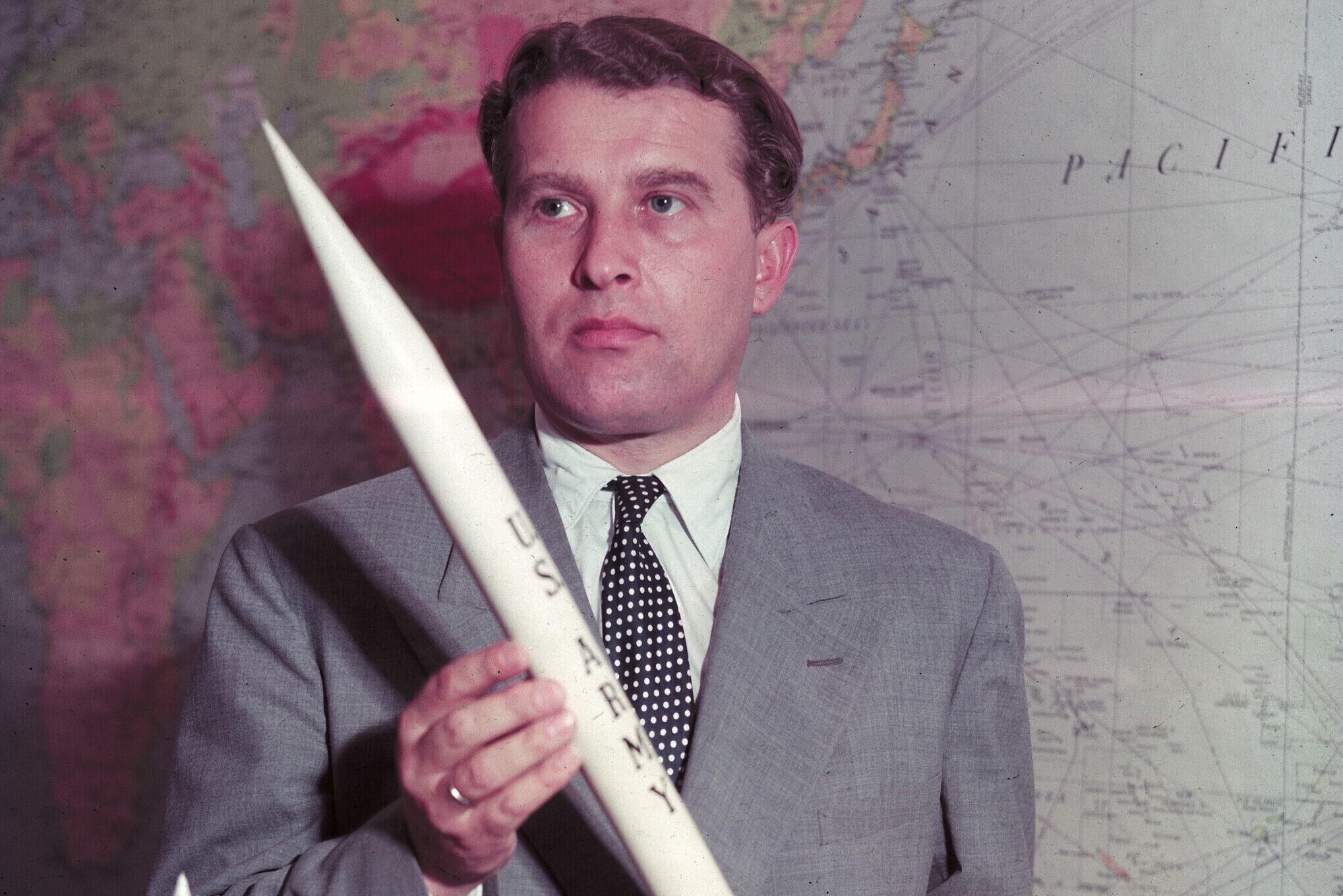What a change in lives: going from building V-2 rockets for Nazi Germany to developing the U.S. space program.
That’s the transition 1,600 German scientists and support personnel made after World War II. On one day, under the compulsion of Hitler and his SS. The next day, under the custody of the United States.
The surprising thing is that the rocket team code-named “Operation Paperclip” did a phenomenal job for both sides.
That is the setting of the novel, “The German Wife,” by Australian novelist Kelly Rimmer. It is loosely based on “the father of space travel,” Dr. Werhner von Braun.

Dr. von Braun, along with his fictional counterpart, Jurgens Rhodes, was the penultimate rocket scientist. He was fascinated by and experimented with building rockets since he was a teenager. His education and early job experience continued his development as the rocket man.
The logical German scientist to head the development of their rocket program was von Braun. Nazi leadership had realized he was a valuable asset to the war effort. On one hand, they treated him and his family well. On the other hand, they closely monitored and guarded him. The von Brauns and their fictionalized characters, the Rhodes, were virtual prisoners in their homes and workplaces.
The von Braun team produced remarkable and fast results. Their final product, the V-2 rocket, was fired hundreds of times against London and other targets. An estimated 5,000 people were killed by the V-2. The Allies knew this. They knew who von Braun and the team were and their strategic value.
The United States and the Soviet Union both wanted von Braun and his team. Both were approaching the rocket facilities in April 1945.
After Germany had lost the war, von Braun surrendered to American forces in Germany in April 1945. He and his family were quietly moved to rural Germany, then to Fort Bliss, Texas. And finally, to Redstone Arsenal in Huntsville, Alabama. The rest is history.
Their Huntsville presence and work were not without controversy. Most of the German scientists had been members of the Nazi party. They say they had to be party members or face imprisonment or execution. Some were members of the militant SS. Few were active in party activities, working overtime to design what became the V-2 rocket. Some of the workers on the rockets were slave labor and prisoners, including many Jews.
Now, the scientists who had enabled the deadly V-2 were working for the other side right here in Huntsville.
In historical fiction, the outline of what happened is known to the author and often to the reader. The novelist creates the drama and dialogue within the framework of known historical facts.
That is the case in “The German Wife.” These German families were strangers in a strange land. Huntsville folks were distrustful. They felt the German newcomers had escaped justice, which they had witnessed in televised trials at Nuremberg. Even some other German families in Huntsville were negative toward the von Brauns because of his SS membership.
The book is available on Amazon.com in hardback, paperback, Kindle and audiobook.
The rocket program was eventually a success, a great American success story headquartered in Huntsville, which came to be known as “the Rocket City.” How the German families related to others in Huntsville during this great endeavor is what this novel is about.
After reading this novel set during the start of the space program, you will see why Huntsville should be the home of the new Space Command headquarters.
Jim Zeigler is a former Alabama Public Service Commissioner and State Auditor. You can reach him for comments at ZeiglerElderCare@yahoo.com.
Don't miss out! Subscribe to our newsletter and get our top stories every weekday morning.










